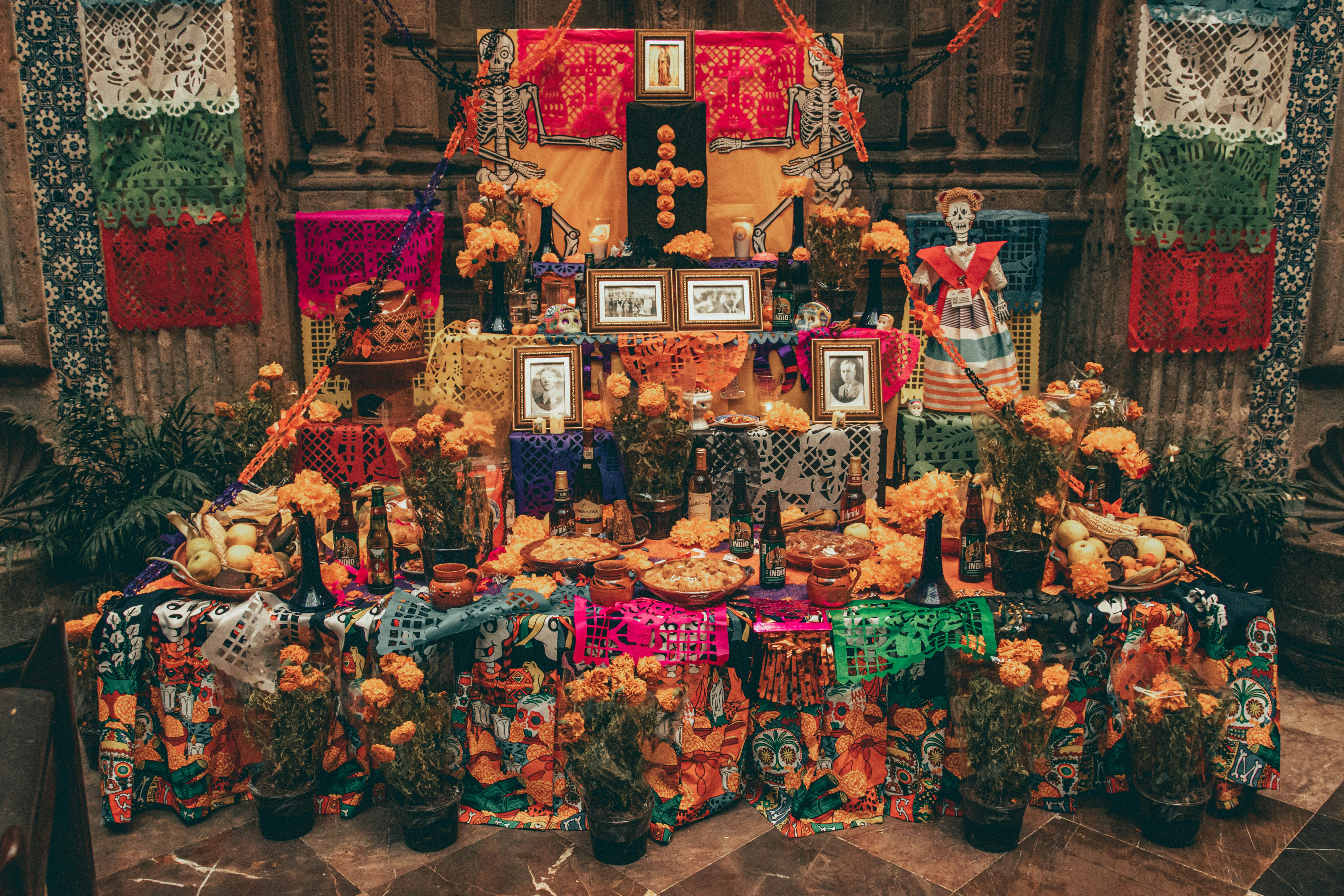How one woman is bringing the fiesta vibe to Cyprus via Mexico’s Día de los Muertos
In Mexican culture, November 1 and 2 are a significant time of year, recognised even by Unesco as part of the country’s Intangible Cultural Heritage. It is when the ethereal portals open, unifying those living and those departed. El Día de los Muertos – the Day of the Dead – is more than a celebration, it is a heartfelt family reunion. The guests of honour? Long-gone ancestors.
One Mexican woman living in Cyprus is on a mission to bring this sacred holiday to the island. But Cristina Segura honours her loved ones, so their spirits are never forgotten, by combining traditional Mexican offerings with koupepia and keftedes as she celebrates with her Cypriot family.
Through an upcoming parade and event at her downtown restaurant Tonantzin on November 9 she invites Nicosia to join in the celebrations and pay tribute to deceased loved ones.
“El Día de los Muertos is a celebration full of happiness because we are excited to welcome our relatives back,” says a teary-eyed Cristina. It is not the Mexican version of Halloween, but an emotional family gathering, full of love, food and drink.

“I remember since I was young, I helped my grandmother in Mexico with the day’s preparations,” she recalls. “It was very special for me to see how she was preparing the food, sentimental yet happy to prepare her parents’ favourite dishes. For us in Mexico, this is a celebration to show we still care for those who transitioned to the other life and on this day, we welcome them back. The children, the adults, the pets too.”
The day holds several ritualistic traditions. Setting up an altar with ofrenda – offerings – is perhaps the most important. This is a table with pictures of ancestors and decorations that celebrate their return.
Candles and colourful paper guide ancestors back, along with the scent of marigold flowers. The pan de muerto, a sweet bread specially made for this holiday, symbolises the body and bones of the departed while incense sticks are lit to clear energies. Sawdust is placed to add the earthly element.
“We also put salt,” adds Cristina, “it gives them energy to come because it is a powerful mineral for protection. We place water too because, of course, they will be thirsty, and food as its divine smell draws them in.”
Most important, is perhaps the photograph – one for each dead relative – and a small candle placed in front of it, lit at exactly 8pm on November 2 when the portals officially open. Departed children are celebrated a day earlier, while pets are included with the adults.
On the colourful altar are of course skulls and skeletons, distinctive elements of Mexican culture, yet there is nothing dark or sinister about them. For Mexicans, they are simply a reminder that death is just another part of life.
In Aztec culture, life and death were intertwined, with offerings left for loved ones during their unearthly travels, celebrating the Goddess Mictlān of the underworld. With the arrival of Spanish conquistadors and Catholicism to Mexico, the All-Saints’ Day and All Souls’ Day celebrated on the first two days of November merged with this Aztec holiday creating the Día de los Muertos.
For decades, children and adults in Mexico have painted their faces as skulls, wearing colourful traditional dresses and costumes and joining cemetery processions and parades. Now, thanks to Cristina, Nicosia too has a Day of the Dead parade, as close to the original Mexican tradition as possible, a follow on from last year’s initial event.
On November 9 at 6pm, a short parade will start from Eleftheria Square down Ledra Street and end at Tonantzin restaurant for live entertainment, music, and traditional Mexican food.
“Of course, there will be plenty of margaritas and tequila. Tequila is always a good idea,” Cristina laughs.
Fiesta vibes aside, what makes this holiday special for Cristina is the preparation, welcoming loved ones back. Every year, Cristina leaves a plate of mole verde, a typical Mexican green sauce, for her mother, rum and tequila for her father and grandfather. By morning, she finds the glasses mysteriously half-empty, as if her family really did return for one more drink.
What added a Cypriot twist to her very Mexican rituals was when she introduced the celebrations to her Cypriot mother-in-law. “At first, she was scared of the skull decorations. But the following year she returned with a picture of her parents. She told me her mother liked koupepia and her father keftedes so we prepared those for them, along with olives and my tequila. We created a Mexican-Cypriot altar so both families can try the mole and the koupepia,” she says.
Being so far away from home and now having a son, keeping her culture’s traditions alive is important to Cristina. Cyprus too, she says, has similar close-knit family values and traditions and bringing them together feels natural.
“I get quite emotional each year but I am also very excited because now my family comes to visit me in Cyprus. They don’t have to pay a ticket now,” she jokes, “but they will come, I know it.”
Día de los Muertos Celebrations
Parade and fiesta with traditional Mexican entertainment, food and drink. November 9. Parade starting point: Eleftheria Square, Nicosia. End: Tonantzin Restaurant, Nicosia. Tel: 99-283660. www.facebook.com/tonantzincy





